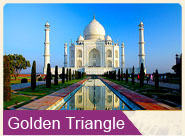Bandel Church 43 km from Kolkata, is an anglicized version of bandar, meaning ’wharf’ in Portuguese. Once an important port, it is known today for its church, the oldest outside Kolkata. However, the present cathedral is a replacement of an earlier edifice that was razed to the ground when Shah Jahan, the Mughal emperor, sacked the Hooghly in 1632. The Portuguese, nevertheless, were soon allowed to return and the present Basilica was built in 1660 by Gomez de Soto, who had the keystone of the old church. The universal feelings, however, are carried forward. The beauty and peace of this Basilica is intoxicating. And the flame of the candles lit by hundreds of devotees flicker with hope even in these troubled times.
Belur Math, the headquarters of Ramakrishna Mission, is situated to the north of the city across the Vivekananda Bridge from Dakshineshwar. The world-famous temple was built by Shri Ramakrishna’s beloved disciple Swami Vivekananda in 1938. The great mansion lies 3 km south along the west bank of the river Hooghly.
Bishnupur Located 100 km northwest of Kolkata in Bankura district, Bishnupur has a glorious past that is reflected in its rich architecture, music and handicrafts such as pottery and weaving. It houses unique terracotta temples. formerly the capital of the Malla kings, Bishnupur is renowned for its crafts such as intricate Balucheri saris, the rare ganijifa (circular Indian playing card), delicate carving on shells and bell metal artifacts. The brick temples at Bishnupur, built between the 17th and 18th centuries, are located in the ruined fort area and its neighborhood. The oldest brick temple is a curiously shaped Rasmancha with an elongated pyramidal tower surrounded by hut-shaped turrets was built in the late 16th century by King Beera Hambira. The temple of Madanmohana, the best known in Bishnupur, in the Sankharipara area was built outside the fort compound by King Durjana Singh Dev, in AD 1694. It is built in the ”eka ratna” style, a square flat-roofed building with curved cornices, surmounted by a pinnacle. Apart from temples, Bishnupur has some very attractive bandhs or large tanks that offer good sightseeing. The Lalbandh, Krishnabandh, and Pokabandh were built by the Malla kings around 17th and 18th centuries.
Botanical Gardens Founded in 1786 beside the Hooghly in Shibpur, the Botanical Gardens is a main attraction in the vicinity of Kolkata. Covering an area of 110 hectares. The main attraction of the garden is a 250-year-old banyan tree (Ficus bengalhensis) which rises to a height of 98 feet and measures over 1,300 feet in circumference.
Chinsura, 46 km from Kolkata, is the locale of a Dutch factory built in 1628. The Fort Gustavas, as it is known, has been described by Gautier Schouten in 1665 as the most magnificent structure to be built in Hooghly. With the outbreak of war in Holland in 1781, Chinsura was annexed by the British.
Dakshineshwar Temple Dedicated to Goddess Kali, the Dakshineshwar Temple is situated to the north of Kolkata, a place where Ramakrishna Paramhansa, the spiritual guru of Swami Vivekananda, lived most of his life. The temple was built by Rani Rashmoni in 1847. The temple comprises of three parts. The smallest is dedicated to Lord Vishnu. The more beautiful shrine adjacent to it houses the renowned idol of the Goddess Kali. The roof is curved and the second story is capped by nine chhatris, each with a beehive cupola, in the navaratan (”nine-jeweled”) style. Ramakrishna died in 1886 at the age of fifty. The temple of Kali, where many of his ecstatic trances occurred, continues to attract pilgrims from all over India and the world.
Shanti Niketan, Tagore’s university townshipsituated 136 km northwest of Kolkata, this is the place where Rabindranath Tagore lived and established a university. The Poush Mela is celebrated in Shanti Niketan usually on the 22nd or 23rd of December. The three-day function marks the foundation of Shanti Niketan.
About Kolkata | Kolkata Sight Seeing | Around Kolkata Tour | Packages












